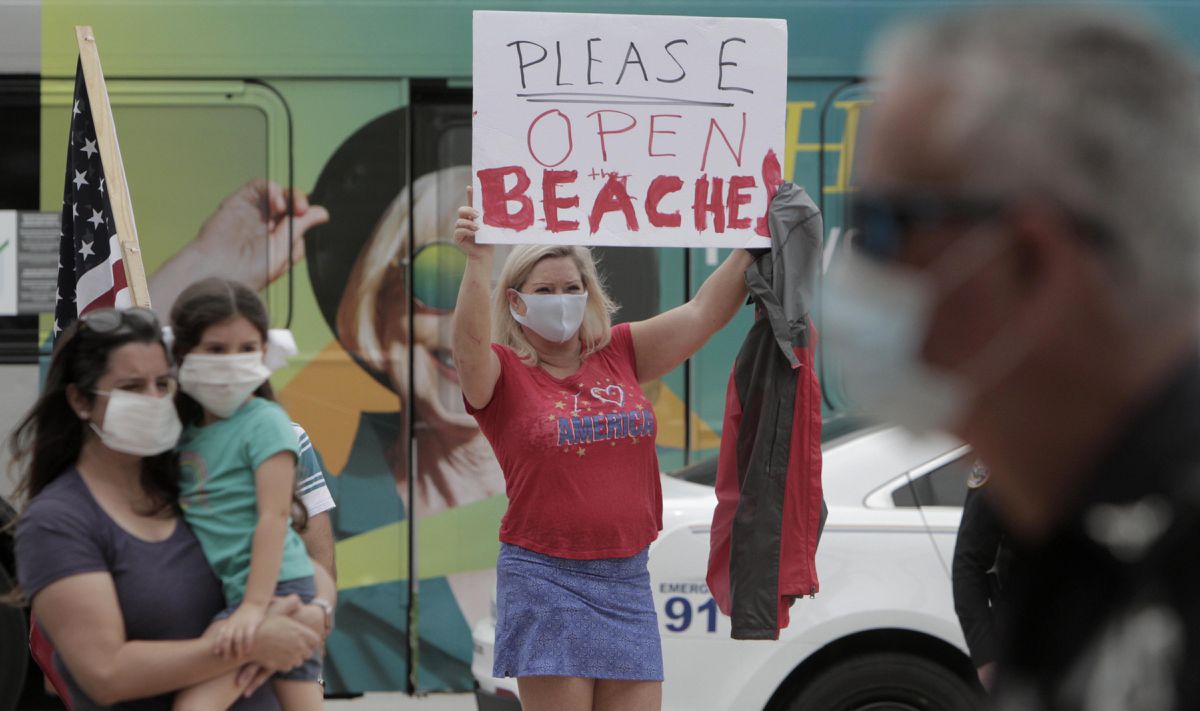As Spain sees a rise in cases unlike that in most countries, the US continues to languish in COVID-induced misery

A few minutes every morning is all you need.
Stay up to date on the world's Headlines and Human Stories. It's fun, it's factual, it's fluff-free.
In mid-May, with cases of COVID-19 steadily declining, Spain was among a number of countries that began a phased approach to ending its lockdown. Through an abundance of caution, which involved strict limitations on how many people could be inside restaurants and bars simultaneously and mandated that citizens wear masks in busy public spaces, the country gradually reopened its economy.
Now, weeks after the end of the country’s estado de alarma (state of alarm), Spain has seen additional COVID-19 outbreaks in 15 of its 17 autonomous regions. While none of these outbreaks have been severe, the affected Spanish regions quickly reacted by enforcing new lockdowns and placing restrictions on public gatherings.
In many countries around the world, a second spike in cases has been common. However, nowhere have the higher case numbers been as seemingly long-lasting and severe as in the United States.
Spain returns to lockdown
As reported by the Spanish paper El Pais, two weeks after Spain’s COVID-19 state of alarm came to an end, multiple areas throughout the country have had to return to lockdown in response to new outbreaks.
The largest lockdown has occurred in the Lleida province in Catalonia (the autonomous region that includes Barcelona). The lockdown happened in the Segrià municipality, home to more than 200,000 residents, after multiple outbreaks were detected in “four fruit companies, a food firm, a senior residence, a residential block, and a hostel for homeless people.” This new lockdown could last up to 15 days.
Another 71,000 people were confined in a lockdown in the Lugo province of Galicia, while the 80,000 residents that inhabit the Aragon region have had to move back a phase in their reopening plans. While hundreds of new cases have been found, deaths in most regions have been brought down to the single digits or eliminated completely.
Other regions in Spain have also seen recent outbreaks, including Madrid, but they have been relatively contained. So far, other regional governments within the country have not enacted new lockdowns.
Spain first went into lockdown in mid-March as the country quickly became one of the hardest hit nations in the world.
In late March, Spain had among the most coronavirus-related deaths of any country. Spain’s government enacted one of the strictest lockdowns in the world, with positive results. By the end of April, the country was preparing to reopen using a three-phase approach.
Spain’s state of emergency ended on June 21, with the country permitting overseas tourists to travel to the country as of July 1.
However, due to ongoing outbreaks, the European Union announced at the end of June that residents of the US would not be permitted to travel to EU countries, including Spain.
New COVID-19 outbreaks in Asia
In Asia, where the initial outbreak of COVID-19 occurred, many of the countries first hit by the virus were also among the first to ease restrictions. Many subsequently saw new spikes in cases.
One such country, Singapore, appeared to have the virus under control in March and was labeled “a model for how to hold back the coronavirus.” But the city-state saw a surge of cases in mid-April, specifically among migrant workers in cramped dormitories.
Singapore’s case numbers peaked in April, resulting in an extension of the city-state’s lockdown until June 1. Since then, Singapore’s numbers have been in decline. On July 5, the government confirmed 136 new cases, 93% of which were the result of known clusters.
Similarly, while South Korea’s initial response to the pandemic appeared to contain the outbreak, after much of the country returned to business as usual, the capital city of Seoul was forced to close down many public spaces after 79 new cases were reported on May 28. Though this was a relatively low number compared to the worst days of the pandemic – and is dwarfed by the numbers currently coming out of the US – it was the most cases the country had seen in a single day for nearly two months.
South Korea has continued to struggle to contain cases, experiencing another spike in mid-June. The nation’s easing of restrictions in May has been blamed for the continuing outbreaks, with new daily cases having consistently averaged in the double digits for over a month.
New Zealand’s successful response
One of the few countries that has, so far, had unequivocal success in quelling their COVID-19 outbreak is New Zealand.
After seeing a dramatic spike in cases in late March, the country all but eliminated new cases by early May. A big part of New Zealand’s ability to prevent a second spike like South Korea and Singapore experienced has been the closing of its borders to outside visitors.
Nonetheless, New Zealand’s Prime Minister Jacinda Ardern has stated that a resurgence is still possible and that the country must remain vigilant.
The United States’ continuing COVID-19 surge
Unlike other countries that largely contained their initial cases and eventually saw a resurgence later, the US has yet to experience a sustained period of containment.
New York City, the hardest hit city in the country, has managed to bring down its daily cases. That decline, though, has coincided with spikes in other states. Arizona, California, Florida and Texas all had record numbers of daily cases just last week and case numbers in other states are similarly surging.
In response, Texas reimposed restrictions on public gatherings and restaurants in late June. California did the same a few days later for seven counties, including Los Angeles. Arizona also closed down public spaces again, including bars and gyms, for 30 days.
Florida Governor Ron DeSantis, by contrast, has said his state is “not rolling back” its already implemented reopening plans, regardless of the surge in cases.
President Trump’s optimism
Over the weekend, President Donald Trump once again asserted that the reason for the spike in cases was due to increased testing. Trump has repeatedly insisted in his tweets and public appearances that the US has done a “great job” responding to the pandemic. He has also pointed to the decrease in deaths as evidence that the country should continue to reopen.
Dr. Anthony Fauci, one of the nation’s leading infectious diseases experts and a White House adviser for the COVID-19 outbreak, has given a bleaker assessment.
At the end of June, Fauci testified to the US Senate that the nation could reach 100,000 new cases a day if people didn’t follow safety guidelines, including wearing masks.
In recent weeks, Trump has held multiple public events and rallies in which guests were not required to wear masks, including an event on July 3 at Mount Rushmore. This despite medical experts, including Fauci, advising the use of masks in public.
Have a tip or story? Get in touch with our reporters at tips@themilsource.com




Comments ()